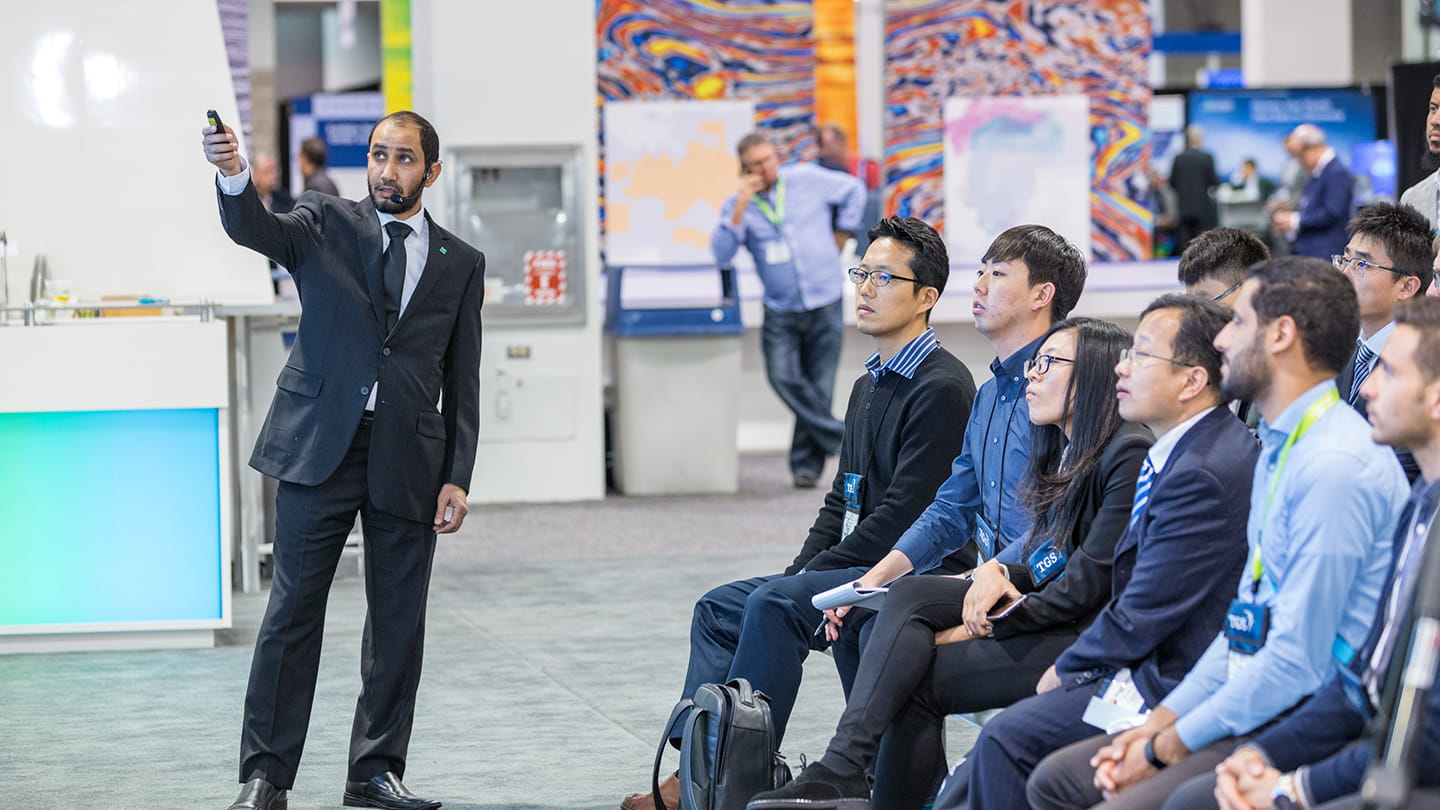Aramco scientists provide strong showing at global geophysics summit

Saudi Aramco made an influential showing at the Society of Exploration Geophysicists’ annual convention in California, with an array of the world’s leading seismic experts, contributing to more than 35 panels and scientific papers presented at the event.
Panels led by Aramco scientists spanned an array of innovation themes. One examined the use of data collected by helicopters to create images of sand dunes, another looked at a new way to find seismic faults using neural network-based technology, and a third talked about using seismic and other real-time data to look ahead of the drill bit to make important geosteering adjustments on the fly. The latter included a discussion on the DrillCam tool Aramco developed to predict ahead of the bit and see around drilling activity.
Representatives from production companies met with service providers at the event, which attracts about 6,000 professionals each year to discuss latest advancements in onshore and offshore exploration, as the industry moves further into digital tools and robotics.
“The event is an excellent place to interact with service companies from around the world that do seismic work for us and to see the latest innovative equipment on display,” said Saudi Aramco chief geophysicist Turki M. Al Ghamdi.
Aramco scientists participated in several other sessions and workshops at this year’s conference, joined by many Aramco-sponsored students currently studying geophysics in the U.S. Two of these focused on data analytics, artificial intelligence (AI) and machine learning for geosciences. Weichang Li, senior researcher at the Aramco Research Center in Houston, was a speaker, panelist, and organizer at these sessions. He also gave a tutorial on machine learning:
“There are several areas where data analytics, AI, and machine learning can provide a new perspective or advantage when applied to geosciences,” said Li. “These include automated and integrated processing, improved processing performance, new ways to quantify uncertainty, and ultimately, improved decision making.”
Li said that the geosciences are ripe for AI, which has already been leveraged in other industries such as e-commerce (Amazon), social media (Facebook), search (Google), medical imaging (GE, Siemens), and finance.
“Artificial intelligence and machine learning are emerging areas for geoscientists with rapid development that might change industrial practices in many areas,” Li added.
Visitors to the convention were able to see three presentations at the Saudi Aramco booth led by seismic researchers based in Dhahran. Petroleum engineer Mohammed M. Alhussain gave a speech on “Quantitative Seismic Integrated Modeling Workflows: Reducing Field Development Uncertainty.” Geophysicist Rashed M. Ghenaim, spoke to conference attendees about modern 3-D technologies for sub-salt imaging in complex marine environments, showing how instruments can be deployed to collect data while working around obstacles such as islands.
Finally, geophysical specialist Mohammad S. Bannagi delivered a presentation titled “Joint Velocity Model Building and High-Resolution Depth Imaging of Full Wavefield 3-D VSP Data.”





 Email: info@cyber-gear.com
Email: info@cyber-gear.com